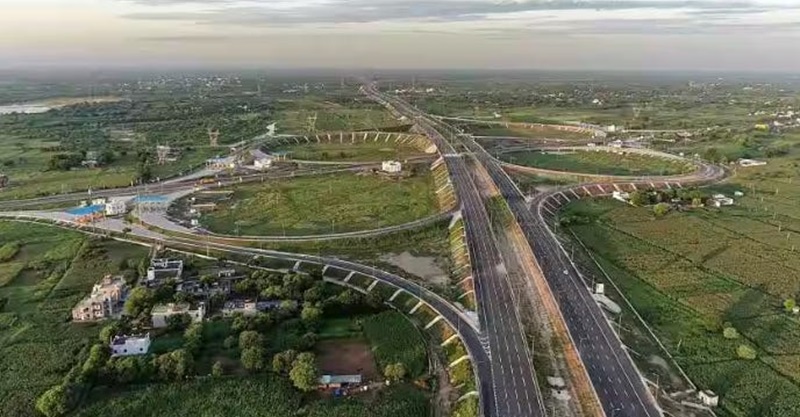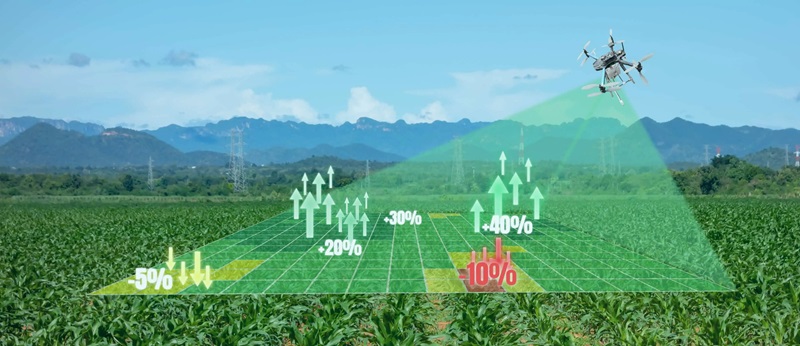Embracing the AI-Powered Digital Future of Higher Education

Sandeep Bansal, Director IT and Digital Transformation at Manipal Academy of Higher Education
The world is characterised by constant changes and trends. The market is continuously evolving, consumer behaviours are changing, and technologies are emerging at the speed of light. This juxtaposition of digital transformation being the only constant element in the ever-changing ecosystem imposes an urgency on every sector to improvise, enhance, and match the strides of technological developments. Digital initiative is no longer confined to the definition of new technology. Instead, it is now an amalgamation of user adoption, the organisation’s mindset change, and behavioural change during operational tasks.
Digital transformation is not a destination but an unending journey towards continuous change and innovations. In the educational realm, technology doesn’t substitute teachers. On the contrary, it empowers and supports them like a co-pilot.
The emergence of digitalisation in the education sector is a phenomenon that has been around for a while. Valued at $197.00 billion in 2020, the global e-learning market is expected to skyrocket to a staggering $840.11 billion by 2030. Still, its importance was highlighted and proven more so than ever during the pandemic, emphasising the need to scope beyond the physical walls of classrooms, black and white boards, and conventional methods of teaching. The educational sector must elevate from being solely people-oriented to curating a space that accommodates both people and processes.
Higher Education: Foundation and Pillars
Higher education encompasses three components that will set the tone for its future and determine and propel its growth: digitisation, digitalisation, and digital transformation.
- Digitisation: The first step towards catapulting higher education is ensuring thorough digitisation. While institutions leverage technologies for various tasks, from scanning documents to storing information, the infinite volumes of data remain stagnant. Neglecting the value of digitisation in education results in data not drawing analytics; the lack of updated dashboards not only halts regular data updates but also limits its accessibility for both students and the faculty.
- Digitalisation: Educational institutions’ systems comprise multiple applications to oversee the implementation of digital technologies. However, these applications rarely interact with each other, posing data-handling challenges, increasing manual tasks, and leaving room for manual errors and inaccuracies.
- Digital Transformation: The digital reformation of higher education is only possible when the landscape supports the learner (student) perspective, trainer (teacher) perspective, and operational (technological) perspective.
Turbulence and Challenges to Overcome
There is an urgent need to stage and welcome a digital revolution in the educational sector. This transformation, however, requires acknowledging and understanding the challenges serving as roadblocks in the flourishing future of the industry.
- Low Adoption of the Capability Framework: Every organisation operates on a capability framework tailored to support the skills, behaviours, and knowledge required to accomplish the enterprise’s personal business goals. However, in this quest to achieve digital competence and modernity in the educational industry, many institutions undermine the groundwork laid by the capability framework. This framework, which is the foundation and guiding principle of creating a robust infrastructure, often remains overlooked.
- Poor Decision-Making: When introducing the right product to redefine higher education, it is paramount that inclusivity and planning be the driving force behind identifying the compatible product and service. Each institution must have a consultant on board to receive expert guidance and solutions and increase institute-wide scalability to improve decision-making and implement the right product.
- Fragmented Applications: Institutions comprise various applications to oversee different operations—however, these applications are fragmented, resulting in a decentralised network that lacks interconnectivity. The dearth of a technology leader possessing a chest of knowledge on technology integration and data flow riddles the path towards higher education reformation with hurdles.
- Disproportionate Fund Allocation: Finally, the lack of a proper fund allocation process weakens the IT infrastructure. Without adequate funds to build a robust IT system, the education system is marred with inaccuracies, inefficiencies, and obstacles in the journey towards digital transformation.
AI, the Co-Pilot Commandeering the Plane
The future of education is a bustling landscape where knowledge reincarnates in the form of immersive and engaging learning. The captivating realm of artificial intelligence and holographic technology revolutionises the learning landscape, empowering learners with the power to steer the wheel.
With AI, machine learning, and holograms welcoming students into their classrooms, learners and trainers forge a connection transcending physical realms, a connection that enables collaboration and distance learning.
- Second-in-Command: Teachers are the backbone of the education system. Their dedication, compassion, contribution, and time build a safe and inclusive space for students to learn and grow into next-generation leaders. AI is not here to replace teachers; they are irreplaceable. Instead, it, too, will enrol in the classroom to understand and retain what the teacher teaches and trains. Using that information, AI models will assist teachers in drafting question papers, running quick tests, and even evaluating papers.
- Resolving Queries: In my view with the capability of Generative AI chatbots, Students can raise their concerns and questions from these bots. AI models need to study and build a strong LLM from the delivered lectures. It can formulate correct answers and reasoning to assist students. Furthermore, chatbots retain information on a long-term basis. Therefore, should students not attend class, they can receive a comprehensive summary of the lectures from the chatbot.
- Omnipresent Technology: Teachers are not omnipresent; technology is. In future technologies like Hologram allow educators to teach multiple classrooms simultaneously with virtual presence. This technology will help to provide education to inaccessible regions across the globe, and may enable institutions to expand their reach and play an active part in eliminating educational inequalities and surpassing constraints limiting the availability and accessibility of education.
A Promise for an Engaging Future
Digital transformation is the secret ingredient that will bring educators and learners closer to a future brimming with possibilities and new avenues. At its core, digital education simplifies complex tasks. It is more than introducing and implementing technologies; it is a holistic IT infrastructure encompassing a complete end-to-end ecosystem, high-scale computing for students, and creating a safe and secure learning environment that protects the identity of students and trainers alike while ensuring constant integration and innovation.
The journey into industry
Where there is a technological revolution, there is Mr. Sandeep Bansal. As a seasoned tech leader, Mr. Bansal has been redefining digital initiatives by driving impactful digital transformation across diverse industries, from IT to oil and gas and transportation to manufacturing. His contribution to the landscape of higher education has also opened new doors for digital development.
Standing at the forefront of the growth of the higher education industry, Mr. Bansal has been instrumental in designing and architecting digital transformation roadmaps. He is the prominent name behind the adoption of the Higher Education Digital Capability Framework in a leading institute by leveraging Salesforce Education Cloud (HEDA).
Sandeep Bansal’s journey in the field of education development has covered various milestones, including digitisation, automation, and integration. His team works towards implementing data modelling and promoting data-driven approaches that optimise institutional processes and boost efficiency. Over the years, Mr. Bansal has received recognition and numerous accolades for his pivotal role in effective leadership and business process management, proficiency in project and program management, strategic operations planning, exemplary stakeholder communication and vendor management skills, and unmatched IT operations and service management acumen.
Mr. Sandeep Bansal has been recognized as a trailblazer by Salesforce for implementing India’s First Salesforce Education Cloud. He has been awarded the Game Changer Award at the CIO 100 Awards and recognized as the CIO of the Year by IDC. He is also the recipient of the Certificate of Excellence and Defender 100 Awards by CIO Axis, has won the title of Digital Transformation Leader by Tekq CIO Forum, and has been recognized for his contributions to digital enablement by Elite CIO.








